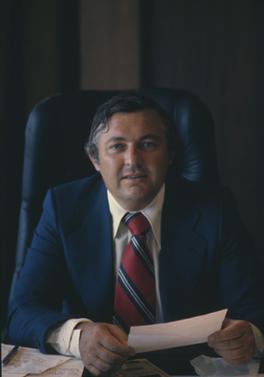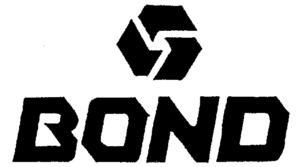Alan Bond facts for kids
Quick facts for kids
Alan Bond
|
|
|---|---|
 |
|
| Born | 22 April 1938 Hammersmith, London, England
|
| Died | 5 June 2015 (aged 77) Murdoch, Western Australia, Australia
|
| Nationality | Australian |
| Occupation | Businessman |
| Years active | 1954–1992 |
| Known for |
|
| Title | CEO of Bond Corporation Holdings Ltd |
| Criminal charge(s) | Corporate fraud |
| Criminal penalty | Four years' imprisonment |
| Spouse(s) |
|
| Children | 4 |
Alan Bond (born April 22, 1938 – died June 5, 2015) was an Australian businessman who became well-known for his many business ventures. He is especially remembered for helping fund the winning team of the 1983 America's Cup, which was a huge achievement for Australia. He also founded Bond University in Australia. Later in his life, his business empire faced major challenges, leading to a significant corporate collapse.
Contents
Early Life
Alan Bond was born in London, England, on April 22, 1938. When he was 12 years old, in 1950, he moved to Australia with his parents and older sister. They settled in Fremantle, a town near Perth.
Building a Business
Alan Bond started his career as a signwriter, painting signs for businesses. His first company was called 'Nu-Signs'. Later, he changed its name to Bond Corporation in 1959.
 |
|
|
Formerly
|
|
|---|---|
| Public | |
| Traded as |
|
| Industry | Real estate, brewing, media, and natural resources |
| Fate | Bankruptcy |
| Successor | Southern Equities Corporation Limited |
| Founded | 1959 as Progress Development Organization |
| Founder | Alan Bond |
| Defunct | 1991 |
| Headquarters | , |
|
Areas served
|
Australia, United States, Chile, Hong Kong, and Europe |
In the 1960s, Alan Bond became a successful property developer. He built many apartments and housing estates, like Lesmurdie Heights. As his business grew, he expanded into other areas. He invested in brewing companies, making beer, and also in gold mining and television stations.
In 1987, Bond Corporation founded Bond University, Australia's first private university. He also bought a famous painting called Irises by Vincent van Gogh for a very high price at the time. This painting was later sold to a museum. That same year, he helped build the Bond Centre in Hong Kong, a large skyscraper complex.
The America's Cup
Alan Bond became a national hero in Australia because he supported the country's teams in the America's Cup. This is a very famous international yacht race. In 1978, he was even named Australian of the Year.
His yacht, Australia II, won the 1983 America's Cup. This was a huge deal because the New York Yacht Club had held the cup for 132 years! This victory was one of Australia's greatest sporting achievements. Because of this win, Alan Bond received an important award called the Order of Australia.
Buying the Nine Network
In 1987, Alan Bond bought the Channel Nine television network across Australia. He paid a very large sum of money, about $1 billion, to Kerry Packer's company. This was a major business deal at the time.
Business Challenges
In 1992, Alan Bond faced serious financial difficulties and was declared bankrupt. This meant he could not pay all his debts. He had to sell some of his properties, including a large estate in England.
Later, in 1995, his family helped him resolve his bankruptcy by paying a smaller amount to his creditors.
In 1997, Alan Bond was found to have misused funds from one of his companies to help another part of his business empire. He was sentenced to prison for this. He served four years in prison and was released in 2000. After this, he was no longer allowed to hold his Order of Australia award.
New Investments
After his release, Alan Bond started investing in new businesses, especially in mining projects in Africa. He focused on diamonds and oil. In 2008, he was even listed again among Australia's wealthiest people.
In 2003, Alan Bond was recognized for his contributions to sailing and was inducted into the America's Cup Hall of Fame. He continued to work on business projects with his son and a long-time business partner.
Family Life
In 1955, Alan Bond married Eileen Hughes. They were both 17 years old and had four children: John, Craig, Susanne, and Jody. They divorced in 1992.
In 1995, Alan Bond married Diana Bliss, who worked in public relations and theatre. Sadly, Diana passed away in 2012.
Illness and Passing
On June 2, 2015, Alan Bond had heart surgery in Perth. After some problems, he was moved to another hospital and passed away on June 5, 2015.
Projects and Developments
- Observation City, Scarborough
- Yanchep Sun City
- 9 Parker Street, South Perth
- Lesmurdie Heights, Lesmurdie
- South32 Tower (also known as the Bond Tower)
- Bunbury Tower
- Kalgoorlie Super Pit
- Bond University in Queensland
- Bond Centre in Hong Kong (now called the Lippo Tower)
Images for kids


